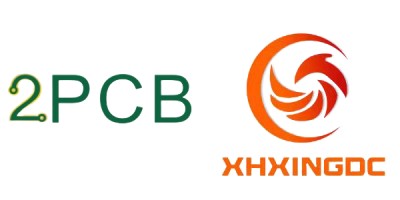High-speed PCB design needs to face many different fields and products, and the core design requirements of each field are different. For example, the data and communications fields require ultimate product performance, and consumer products stand out for their performance-price ratio; on the contrary, the military and industrial fields require absolute reliability… Next, let’s briefly talk about different fields High-speed PCB design strategies.
Different high-speed PCB design strategies
1. Telecommunications field
In the field of telecommunications, the design is very complex. In data, voice and image transmission applications, the transmission speed is already much higher than 500Mbps. In the field of communications, what people are pursuing is to launch higher-performance products faster, and cost is not the first. bit. They will use more board layers, enough power and ground layers, and use discrete components to match any signal lines that may have high-speed problems. They have SI (signal integrity) and EMC (electromagnetic compatibility) experts to conduct simulation and analysis before wiring. Each design engineer follows the strict design regulations within the company. Therefore, design engineers in the communication field usually adopt this over-designed high-speed PCB design strategy.
2. Home computer field
Motherboard design in the field of home computers is the other extreme, where cost and effectiveness are paramount, and designers always use the fastest, best, and highest-performance CPU chips, memory technologies, and graphics processing modules to form increasingly complex computers. Home computer motherboards are usually 4-layer boards, and some high-speed PCB design technologies are difficult to apply to this field. Therefore, engineers in the field of home computers usually use over-research methods to design high-speed PCB boards. They must fully study the specific aspects of the design. situation to solve those real high-speed circuit problems.
3. Usually high-speed PCB design
The general high-speed PCB design situation may be different. Manufacturers of key components in high-speed PCBs (CPU, DSP, FPGA, industry-specific chips, etc.) will provide design information about the chips. These design information are usually given in the form of reference designs and design guides. However, there are two problems here: First, there is a process for device manufacturers to understand and apply signal integrity, and system design engineers always hope to use the latest high-performance chips at the first time, so the design guidelines given by device manufacturers Maybe it’s not mature. Therefore, some device manufacturers will provide multiple versions of design guides at different times. Secondly, the design constraints given by device manufacturers are usually very stringent, and it may be very difficult for design engineers to meet all design rules. In the absence of simulation analysis tools and lack of understanding of the background of these constraint rules, satisfying all constraints is the only high-speed PCB design method. This design strategy is often called over-constraint.
Although high-speed PCB design strategies vary widely in different fields, some basic technologies are universal.
Core key points of general high-speed PCB design
1. Design of power circuit
Power supply is the basis for the stable operation of electronic products. Although most of the time the technical challenge of power supply design is not the greatest, once problems with operational stability arise, many times it is actually related to the power supply.
The focus of power supply design mainly lies in the functional design optimization of the power module, the improvement of conversion efficiency, and the design of power channels, etc., which must follow the corresponding technical indicators and rules. For sensitive power supplies or power supplies with large currents, PI simulation must be combined with Improved DC voltage drop and dynamic impedance and noise performance.
2. Design of high-speed parallel signals
The most common circuits are ddr3, ddr4 and other circuits. Especially for Memory Down (onboard memory) design solutions, special attention is needed. While strictly following the original Layout Guide, it is best to assist in optimizing the layout and routing design through simulation analysis. , to ensure the design quality of high-speed signals.
There are many other types of parallel signal designs. Generally, by controlling the absolute length and relative length according to the corresponding chip design rules, and at the same time controlling the number of vias, signal span segmentation, and crosstalk rules, most designs can be satisfied. Require.
3. High-speed serial signal design
At present, the most common PCIE high-speed channels, as well as SATA, SAS, LVDS, USB3.0 high-speed channels, and high-speed optical network channels, etc., the signal speed has generally been improved to the level of 5G, 8G, 10G, 28G or even 56Gbps, so it must be strict Design according to the corresponding high-speed design rules, and at the same time do a good job of signal integrity analysis and optimization, otherwise signal quality problems will easily occur.
4. Others
In addition, there are many key technical points that need to be paid attention to in high-speed PCB design, such as analog signal design, radio frequency signal, digital-analog hybrid, and design attention points in DFM, DFA, EMC, etc. Each direction has a series of rules and requirements. .

